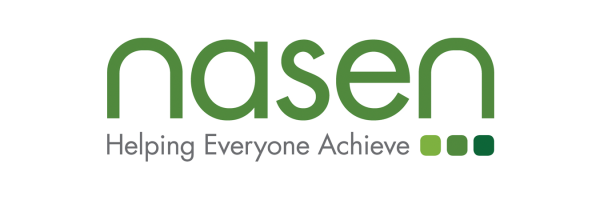
The National Association of Special Educational Needs (nasen) is a charity organisation which has been operating since 1992. nasen has long been a champion, friend and protector of the Special Educational Needs and Disabilities (SEND) community, with more than 14,000 members, including both individual members and organisations. nasen provides professional development opportunities and resources to support practitioners in identifying and meeting the needs of children and young people across both mainstream and specialist settings.
DR ADAM BODDISON, CHIEF EXECUTIVE
I am Chief Executive of nasen and Chair of the Whole School SEND consortium. The consortium brings together schools, organisations and individuals who are committed to ensuring that every child and young person with SEND can achieve their potential at school.
A central theme of the Government’s SEND Code of Practice 2015 is Preparation for Adulthood. Wherever possible, we want to ensure that young people have the skills and experiences to live independently and to contribute to society. This is not only a moral obligation, but it makes good economic sense too. Good career guidance as set out in the Gatsby Benchmarks has an important role to play as part of effective preparation for adulthood, and I was particularly pleased to see the Benchmarks highlight the importance of addressing the needs of each individual learner. A strategic approach to career guidance that assumes a ‘one size fits all’ approach is unlikely to work for everybody and, worse still, it may disproportionately impact on learners with SEND.
MAINTAINING HIGH ASPIRATIONS
The Benchmarks also emphasise the need for meaningful encounters with employers, employees and workplaces. For encounters to be meaningful, care must be taken to maintain high aspirations. The consideration of individual need should not result in less aspirational career guidance, but rather it should focus on aligning guidance to the areas in which the young person can excel. For example, we know from nasen members that a learner who has difficulty with reading or writing can excel in graphic design, or that a learner who struggles with social interaction can have superb analytical skills.
Wherever possible, we want to ensure that young people have the skills and experiences to live independently and to contribute to society. This is not only a moral obligation, but it makes good economic sense too.
FOCUSSING ON LEARNERS’ STRENGTHS

A careers leaders' planning meeting
One particular aspect of SEND to be mindful of is Dual and Multiple Exceptionality (DME), when a learner has both high learning potential and SEND simultaneously. While at school, DME can be difficult to identify since a learner’s needs can mask their abilities and vice-versa. Being aware of DME in the context of career guidance can be beneficial because our members tell us that learners who appear to achieve well in school, where their needs are being met, may struggle in certain work environments, where there is less structure and support. I have visited excellent schools where learners with DME are identified and their needs are met. The feedback from learners is that their anxiety is reduced and their potential contribution to the workplace is validated. The point here is that high achieving does not necessarily mean a young person does not also have SEND. School leaders, Special Educational Needs Coordinators (SENCOs) and Careers Leaders need to take this into account when identifying the workplace experiences which best complement a young person’s strengths.
There are an increasing number of schemes that have a good track record of securing employment for young people with SEND, such as Project Search. Increasingly, employers are also opening up to the value candidates with SEND can bring to their business. Both mainstream and special schools should investigate what is available in their local area and capitalise on it.
INVOLVING EXPERTS
For those in mainstream schools, I would urge you to ensure that the SENCO has a role in strategically reviewing the inclusiveness of the school’s career guidance programme, remembering that what works well for learners with SEND will likely work well for all learners. This can ensure that you are doing all you can to address the needs of each student, in line with Benchmark 3: Addressing the Needs of Each Student. Going further than this, I find that, especially when working with young people with SEND, it’s important to co-produce career guidance programmes with learners and their families, so it becomes a ‘done-with’ rather than a ‘done-to’ process.
ALIGNING WITH OFSTED
A final observation in relation to the Gatsby Benchmarks is regarding Benchmark 4: Linking curriculum learning to careers. This ties in with Ofsted’s increasing focus on the intent and impact of the curriculum and means that there has never been a better time to develop your careers programme. With increasing alignment between the inspection framework and the Benchmarks, it really is a win-win situation.
nasen is well placed to support schools in working towards the Benchmarks through our professional development programmes and our guidance materials. We want to ensure that no learner with SEND is held back in education or in life. By working towards the Gatsby Benchmarks, schools will ensure that learners with SEND can lead fulfilled, independent lives and make a long-term contribution to our economy.

